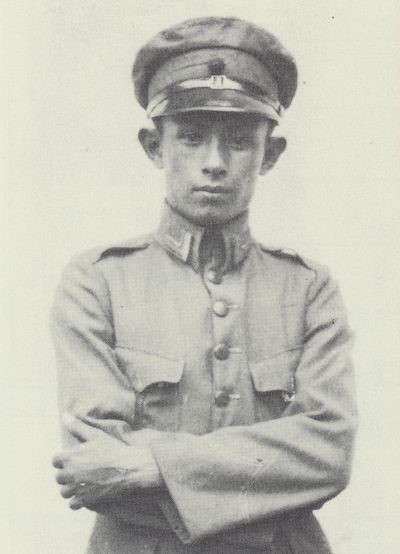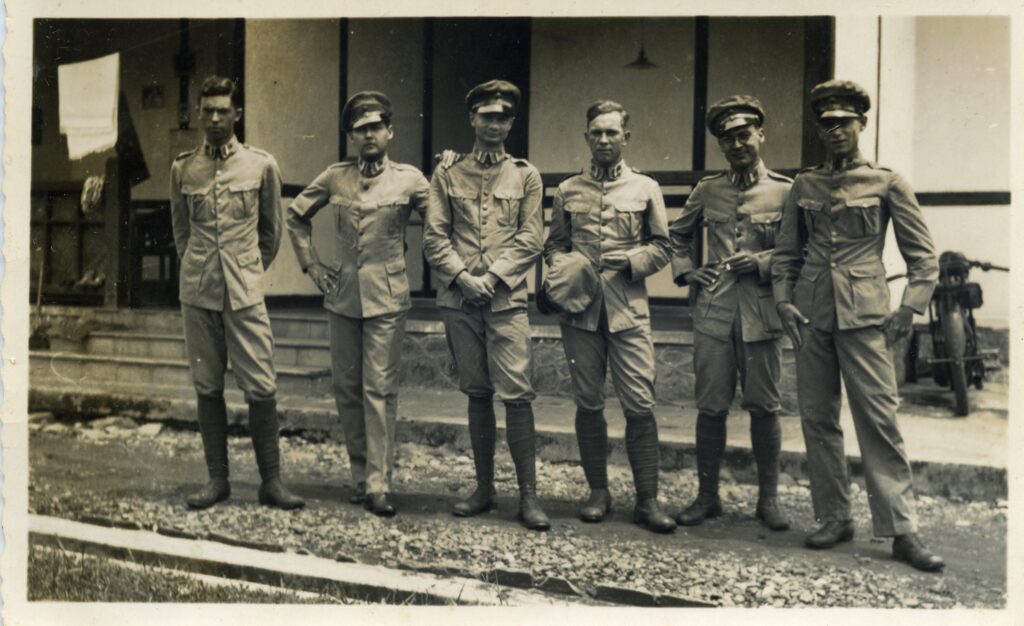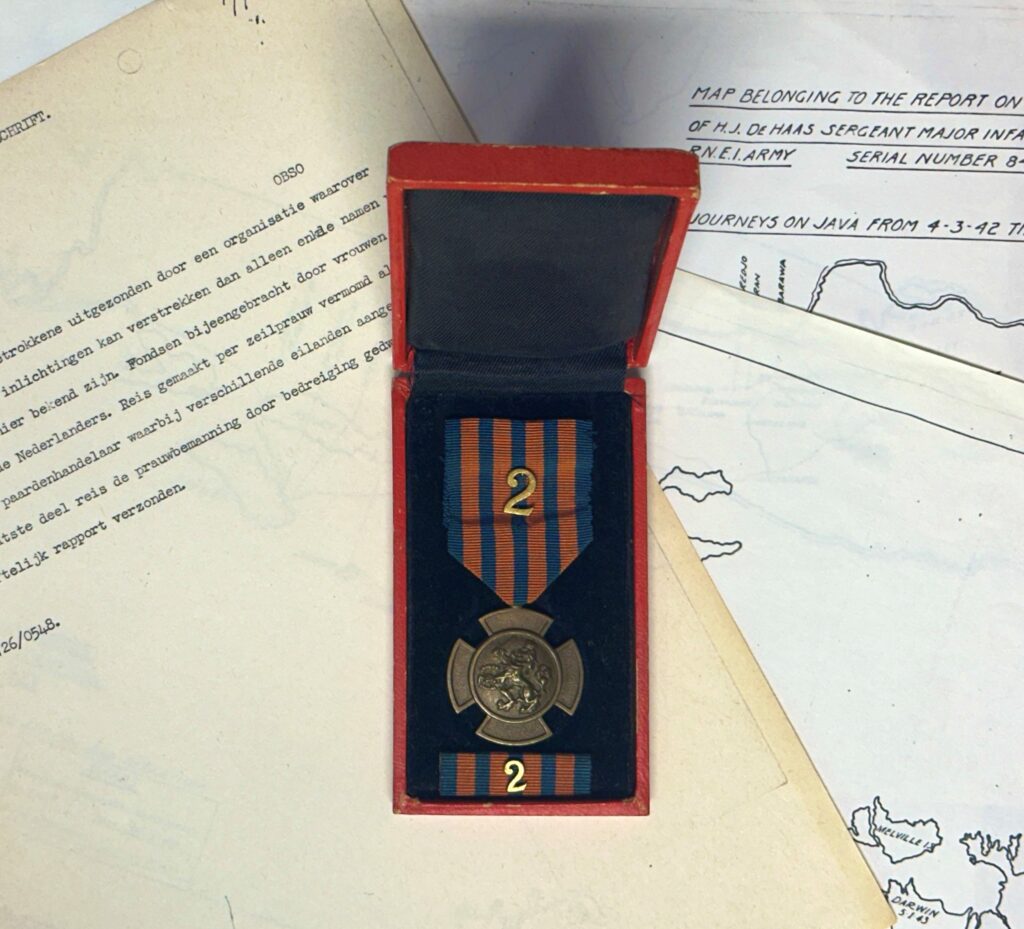
Hendrik Johan de Haas was born in Batavia (now Jakarta) on 28 November 1904, the son of Jozef Hendrik de Haas and Johanna Frederika Susanna Jostein. He married Hendrina Maria van der Meer Mohr in Batoeroesa on 2 January 1911. The couple had two children: Robert Johan (born 28 December 1932, died 15 November 1937) and Gustaaf Eduard (born 3 October 1935), who later married Wilhelmina Hofman in Amsterdam in 1962.
De Haas served as an adjudant-onderofficier (warrant officer) in the infantry arm of the Royal Netherlands East Indies Army (KNIL). Following the capitulation of Dutch forces on Java in March 1942, he escaped by disguising himself as an Indonesian. He made several unsuccessful attempts to join Dutch units continuing guerrilla resistance, and later organised a secret mail service between prisoners of war and their families on behalf of a clandestine Dutch organisation on Java.
On 27 September 1942, he departed for Australia in an unseaworthy vessel, arriving on 31 December 1942 with intelligence of great value to the Allied war effort. In February 1943, he was appointed as an instructor with the rank of adjudant-onderofficier and served in the Melbourne Detachment from October that year. In August 1944, following a reorganisation, he was posted to Camp Columbia in Brisbane and made available to the Netherlands East Indies Forces Intelligence Service (NEFIS). On 12 September 1944, he was commissioned as a second lieutenant in the infantry.


De Haas was soon assigned to “Goldfish I”, a special NEFIS mission to Sumbawa with Sergeant Soeprapto. His wartime service involved multiple dangerous assignments from Australia to islands in the occupied Netherlands East Indies, collecting intelligence on Japanese forces and preparing for Allied base establishments. On 5 October 1944, he sailed from Banda in an 8-ton prahu via Damar to Java, landing at Panaroekan in December for a special mission. During this journey, he conducted reconnaissance and espionage on Flores, Sumbawa and in South Celebes, gathering information on Japanese defences. He succeeded in passing this intelligence to a British submarine commander during a hazardous sea crossing.
In January 1945, he was betrayed by the village head of Panaroekan, arrested by the Japanese Kempeitai, and subjected to severe torture without revealing any information. On 24 or 25 August 1945, just days after Japan’s surrender, he was executed at Djember by order of Adjutant Sakai of the Kempeitai.
For his exceptional courage and leadership, Hendrik Johan de Haas was awarded the Oorlogsherinneringskruis with clasps for “Oost-Azië – Zuid-Pacific 1942–1945” and “Krijg te Land 1940–1945”, and received multiple Royal Decrees recognising his service:
- 5 August 1943 – Honourable Mention on the Bronze Cross (Royal Decree No. 7)
- 3 June 1950 – Posthumously awarded the Bronze Lion (Royal Decree No. 18)
- 30 January 1951 – Posthumously awarded the Bronze Lion for a second time (Royal Decree No. 22)
Hendrik Johan de Haas’s service is remembered as an example of the dangerous and highly skilled intelligence operations carried out by NEFIS operatives from Australia during the Second World War.
See also: Oorlogsgraven Stichting
